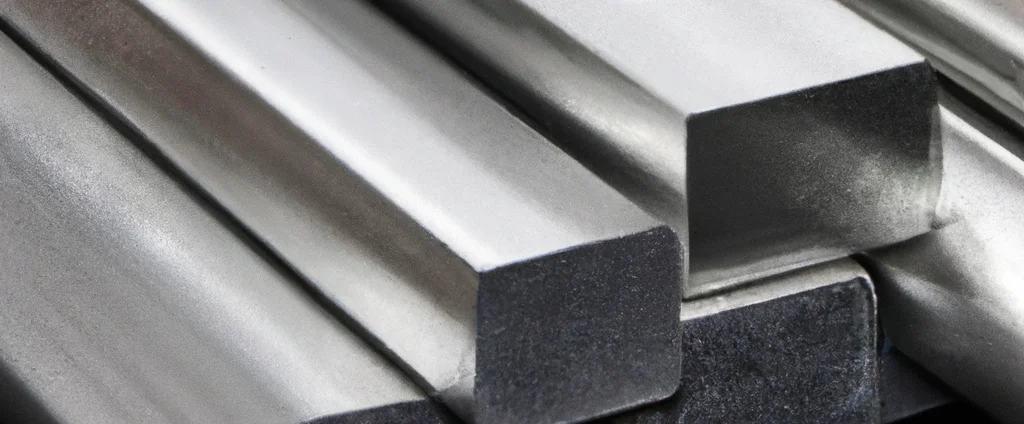Aluminum Alloy 6063 (UNS A96063)

Aluminum 6063 is a premium Al-Mg-Si alloy engineered for extruded profiles, offering an optimal balance of strength-to-weight ratio, corrosion resistance, and aesthetic finish. Its exceptional formability makes it the top choice for architectural and thermal management applications.
| Chemical Composition | ||
|---|---|---|
| Element | Min | Max |
| Aluminum | 97.5% | 99.35% |
| Chromium | —— | 0.1% |
| Copper | —— | 0.1% |
| Iron | —— | 0.35% |
| Magnesium | 0.45% | 0.9% |
| Manganese | —— | 0.1% |
| Silicon | 0.2% | 0.6% |
| Titanium | —— | 0.1% |
| Zinc | —— | 0.1% |
| Residuals | —— | 0.15% |
The following table provides a list of aluminum 6063 properties in both SI and US customary/Imperial units.
Click on the button to switch between Metric and Imperial units.
| Physical Properties | Metric |
|---|---|
| Density | 2700 kg/m3 |
| Mechanical Properties | Metric |
| Tensile Strength | 110 - 300 MPa |
| Yield Strength | 50 - 270 MPa |
| Shear Strength | 70 - 190 MPa |
| Young’s Modulus (E) | 68 GPa |
| Shear Modulus (G) | 26 GPa |
| Elongation at Break | 12% |
| Poisson’s Ratio (ν) | 0.33 |
| Brinell Hardness | 25 - 95 HB |
| Thermal Properties | Metric |
| Melting Point | 620 - 650 °C |
| Thermal Conductivity | 200 - 220 W/m·K |
| Specific Heat Capacity (Cp) | 900 J/kg·K |
| Coefficient of Thermal Expansion (αL) | 2.34×10-5 1/°C |
| Electrical Properties | Metric |
| Electrical Conductivity | 3.7×107 S/m |
| Electrical Resistivity | 3.3×10-8 Ω·m |
The values in this table are approximate and can vary depending on various factors such as the specific manufacturing process and heat treatment applied to the alloy.
Advantages & Disadvantages of Aluminum 6063
| Advantages | Disadvantages |
|---|---|
| Lightweight | Limited weldability |
| Good strength-to-weight ratio | Susceptible to scratches and surface damage |
| Excellent formability | High cost |
| Corrosion resistance |
Applications of Aluminum 6063
Aluminum 6063 is the industry standard for precision extrusions, with critical applications in:
- Architectural Applications: Extensively used in architectural applications due to its excellent combination of strength, formability, and corrosion resistance. Common uses include window frames, door frames, curtain walls, roofing systems, and various structural components in buildings.
- Extruded Profiles: The formability makes it an ideal choice for extrusion processes. Commonly used to produce extruded profiles for various industries, including construction, transportation, electronics, and furniture. These profiles can be found in window and door systems, framing structures, heat sinks, and decorative trims.
- Furniture: Popular in the furniture industry due to its lightweight nature, durability, and aesthetic appeal. Used for manufacturing frames, legs, handles, and other components in furniture such as tables, chairs, and shelving units.
- Electrical Enclosures: The electrical industry utilizes this alloy for fabricating enclosures and housings for electrical components. Its electrical conductivity, corrosion resistance, and ease of fabrication make it suitable for applications such as electrical cabinets, control panels, and junction boxes.
- Heat Sinks: The good thermal conductivity makes it an excellent choice for heat sinks. These components are used in various electronic devices to dissipate heat generated by components such as CPUs, power transistors, and LED lighting. The extrudability allows for the creation of intricate heat sink designs.
- Automotive Components: Finds application in the automotive industry, particularly in components that require a balance between strength and weight reduction. Can be used in radiator tubes, trim pieces, door handles, and structural parts like roof rails and body panels.
- Display Systems: Utilized in display systems for commercial and residential purposes. Can be found in frameworks for signage, trade show exhibits, shelving, and display stands.
- Solar Panel Frames: Commonly used for the frames of solar panels. The lightweight and corrosion-resistant properties make it suitable for supporting and protecting the solar cells.
